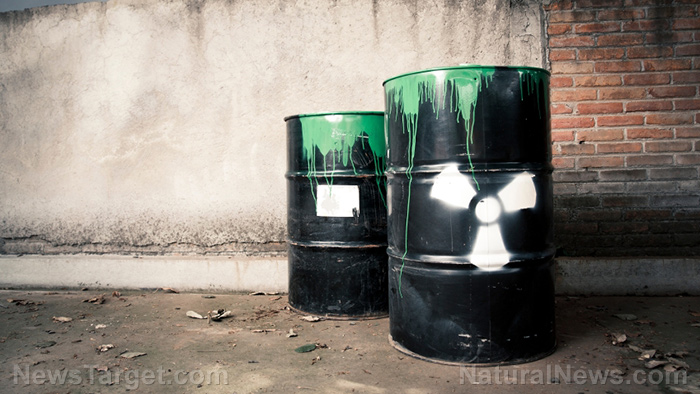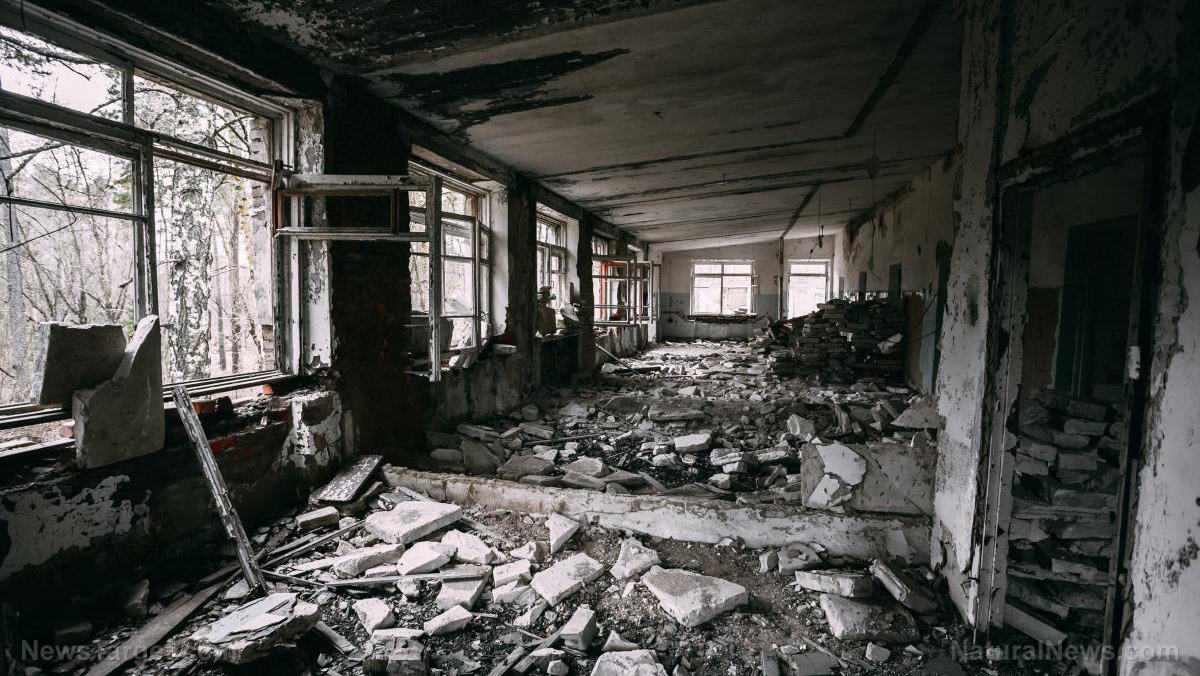Radioactive uranium site collapses into Detroit River, putting drinking water at risk
12/23/2019 / By Isabelle Z.

Michigan’s drinking water woes are poised to get even worse as officials recently confirmed that a property in Detroit that was contaminated with dangerous chemicals including uranium collapsed into the Detroit River on November 26.
The Detroit Dock site collapsed as heavy aggregate piles were stored there over Thanksgiving weekend. Situated at 5851 West Jefferson, the property was once home to Revere Copper & Brass, who were subcontracted under the Manhattan Project and tasked with building the first atomic bomb in the 1940s. In the 1950s, the company built uranium rods used for nuclear bomb development. The site has been listed by the EPA and the Department of Energy as a contaminated site.
The incident is especially troubling as it took place close to the intake lines for Detroit’s drinking water. Further downriver on the Canadian side are water intake lines in Amherstburg.
At first, authorities were unaware of the spill. The Windsor Star reported that several officials with the EPA that they contacted hadn’t heard of the shoreline collapse until the paper reached out to them. Nearly a week later, a spokesman for the state of Michigan’s environmental regulation agency said they were “greatly concerned” about how the incident could impact water quality and the public.
Workers were later seen pushing aggregate with backhoes near the collapse site, part of which remained submerged.
A 2011 evaluation by OSHA found there was the potential for “significant residual radiation.” A few years ago, the Wall Street Journal called the site one of our country’s forgotten nuclear “waste lands.”
Uranium isn’t the only concerning chemical there; beryllium and thorium were also used at the site. In addition to the chemicals in the soil being washed into the river, there’s also the fear of what can happen when the sediment on the bottom of the river is dispersed.
The sediment is full of chemicals such as PCBs, PAHs and mercury, all of which can have a seriously detrimental impact on the water, wildlife and human health.
Windsor Citizens’ Environment Alliance’s Derek Coronado told the Windsor Star: “It’s a concern at what level those three chemicals were on site before this happened and what degree they have gone in the river.”
“But the volume of stuff (aggregate) that went into the river would cause resettlement of the contaminated sediment which is really not good. Moving that stuff around will spread contamination and cause greater destruction to what’s in the water.”
Concerns span both sides of the border
Canadian Parliament Member Brian Masse of Windsor West hand-delivered a letter to the country’s Minister of Environment and Climate Change calling for a binational investigation to be carried out immediately into the collapse given the high potential for contamination. He stated that 40 million people get drinking water from the Great Lakes, whose ecosystem is already fragile. He said this type of threat warrants investigation by both countries involved before it turns into a “nightmare for millions of families.”
It has only been five years since the water crisis in Flint, Michigan, began when the city switched its drinking water source to the Flint River. Poor treatment and testing led to serious water quality issues that caused countless people to become ill, with some dying from Legionnaire’s disease, and raising children’s blood lead levels dangerously high. Officials showed little concern at first, and the community and citizen activists worked tirelessly to expose what was going on.
It’s worrying that it took so long for the authorities to confirm the Detroit Dock site collapse, and we can only hope this situation is ultimately handled a lot better than the Flint water crisis was. With uranium and other toxins making their way into the water, area residents should err on the side of caution and get their drinking water from safer sources.
Sources for this article include:
Tagged Under: clean water, contaminated water, contamination, detroit, drinking water, Ecology, environ, Flint water crisis, Michigan, radiation, toxic ingredients, toxic water, uranium, water
RECENT NEWS & ARTICLES
COPYRIGHT © 2017 RADIATION NEWS



















